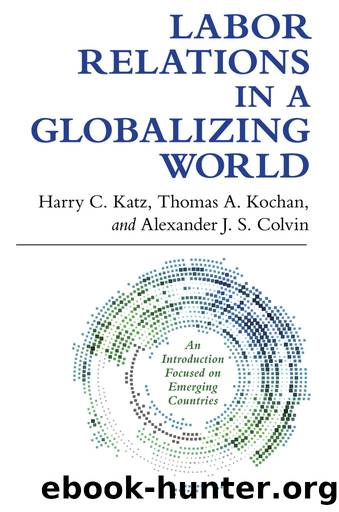Labor Relations in a Globalizing World by unknow

Author:unknow
Language: eng
Format: epub
Tags: Labor, Labor & Industrial Relations, Labor & Employment, Political Science, Business & Economics, Law, General
ISBN: 9780801455513
Google: 0TLVBgAAQBAJ
Goodreads: 55825846
Publisher: ILR Press
Published: 2015-02-25T00:00:00+00:00
The Middle Stage: Probing for Potential Compromises
Once the mediator overcomes the initial stalemate, the next step is to begin an exchange of proposals and test for potential areas of compromise. At this point it is crucial that the mediatorâs diagnosis of the underlying sources of conflict be accurate. The mediator is now beginning to intervene more actively by trying to establish a framework for moving toward a settlement. If the mediator has misjudged the underlying difficulties and tries to push the parties toward a settlement prematurely or in a way that does not overcome some of the major obstacles, his or her credibility can be lost. A retired mediator once told the following story about how he learned he was pushing for a settlement prematurely while mediating a strike:
I started the mediation in the normal way, and the parties responded by discussing their differences in a serious fashion. I then broke the parties into separate caucuses. When I went to talk with the union team I found them playing cards. To my dismay, I could not convince them to stop playing cards and get down to the business of settling the strike. Instead, I was told to go back to my hotel room and that they would call me when they needed me. Later I learned that the major obstacle to a settlement in this case was a structural oneâthe longshoremen on one coast of this country were waiting for the longshoremen on the other coast to settle their contract so that they could then use it as a pattern for their own settlement.
During this second stage of the mediation process, the mediator continues to probe to identify the priorities and bottom-line positions of the two parties. The mediator actively looks for possible acceptable solutions to the outstanding issues. Once the parties have begun to discuss specific proposals, the mediator attempts to determine whether their bottom-line positions are close enough. If they are, then the mediator presses for modifications that would yield an agreement.
The mediatorâs ability to estimate the partiesâ bottom-line positions is crucial at this stage, as is timing. When the mediator judges the bottom-line positions to be close enough to push toward a settlement, he or she takes a more assertive role. The mediator can suggest compromises, push the parties to make compromises they earlier stated they would be unwilling to make, and, in general, try to close the gap between the parties. Engaging in such active tactics prematurely (that is, when the parties are still too far apart) damages the mediatorâs credibility and acceptability.
When conditions are not ripe for settlement, the mediator must hold back from using overly aggressive tactics. When the time is ripe, however, the mediator must take action or risk losing the opportunity to forge a settlement. The mediatorâs prior experience helps guide him or her in judging timing. At this point in the process the art in mediation comes to the forefront.
Download
This site does not store any files on its server. We only index and link to content provided by other sites. Please contact the content providers to delete copyright contents if any and email us, we'll remove relevant links or contents immediately.
The Social Psychology of Inequality by Unknown(2936)
The Plant Paradox by Dr. Steven R. Gundry M.D(2543)
The Writing on the Wall by Anselm Jappe(2009)
Working for Yourself by J.D. (Nolo) Stephen Fishman(1815)
Every Landlord's Legal Guide by Janet Portman & Stewart Marcia & Ralph Warner(1628)
The First 20 Hours: How to Learn Anything ... Fast by Kaufman Josh(1615)
ADHD on Trial by Michael Gordon(1531)
Decisive by Chip Heath(1514)
Working for Yourself by Stephen Fishman J.D. (Nolo)(1476)
Drafting Contracts: How and Why Lawyers Do What They Do, Second Edition by Stark Tina L(1455)
A Practical Guide to International Arbitration in London by Hilary Heilbron(1394)
Restitution by Restitution(1393)
The Economist Aug 8th 2015 by The Economist(1384)
Intellectual Property Strategy by John Palfrey(1384)
The Lord of the Rings: The Fellowship of the Ring, the Two Towers, the Return of the King by J. R. R. Tolkien(1382)
Get What's Yours for Medicare by Philip Moeller(1362)
The Economist Aug 29th 2015 by The Economist(1342)
Collusion by Luke Harding(1281)
Persuasion by Owner(1266)
